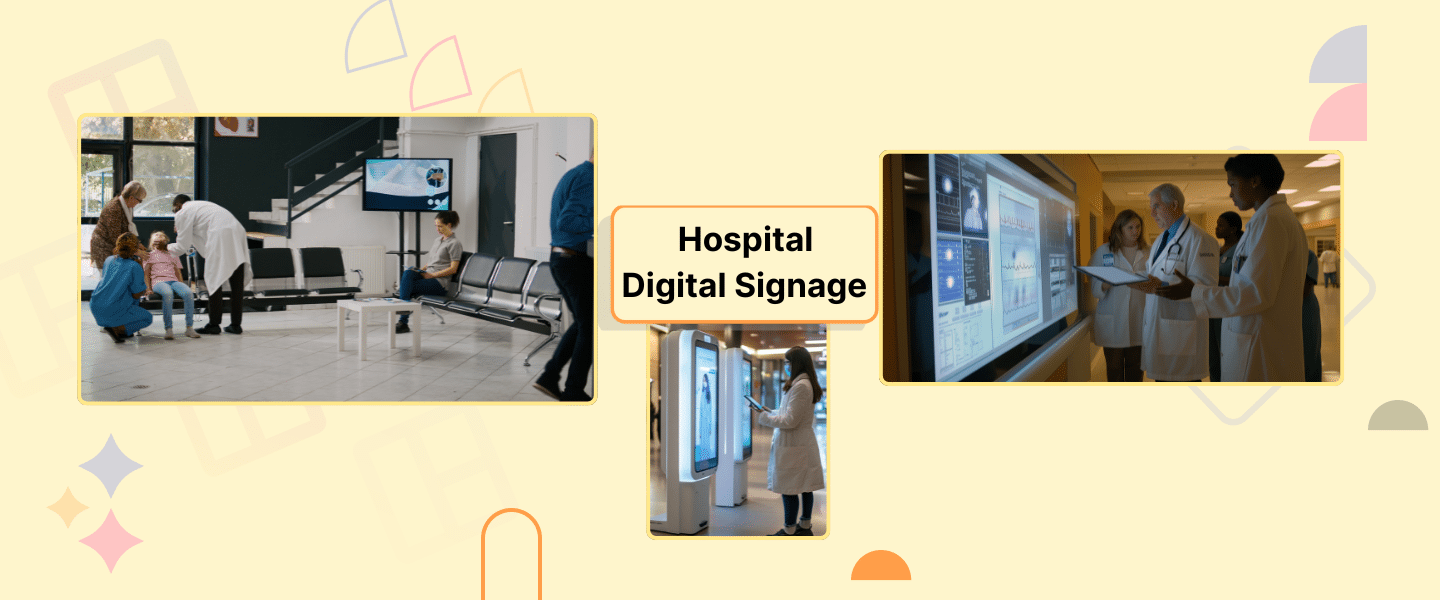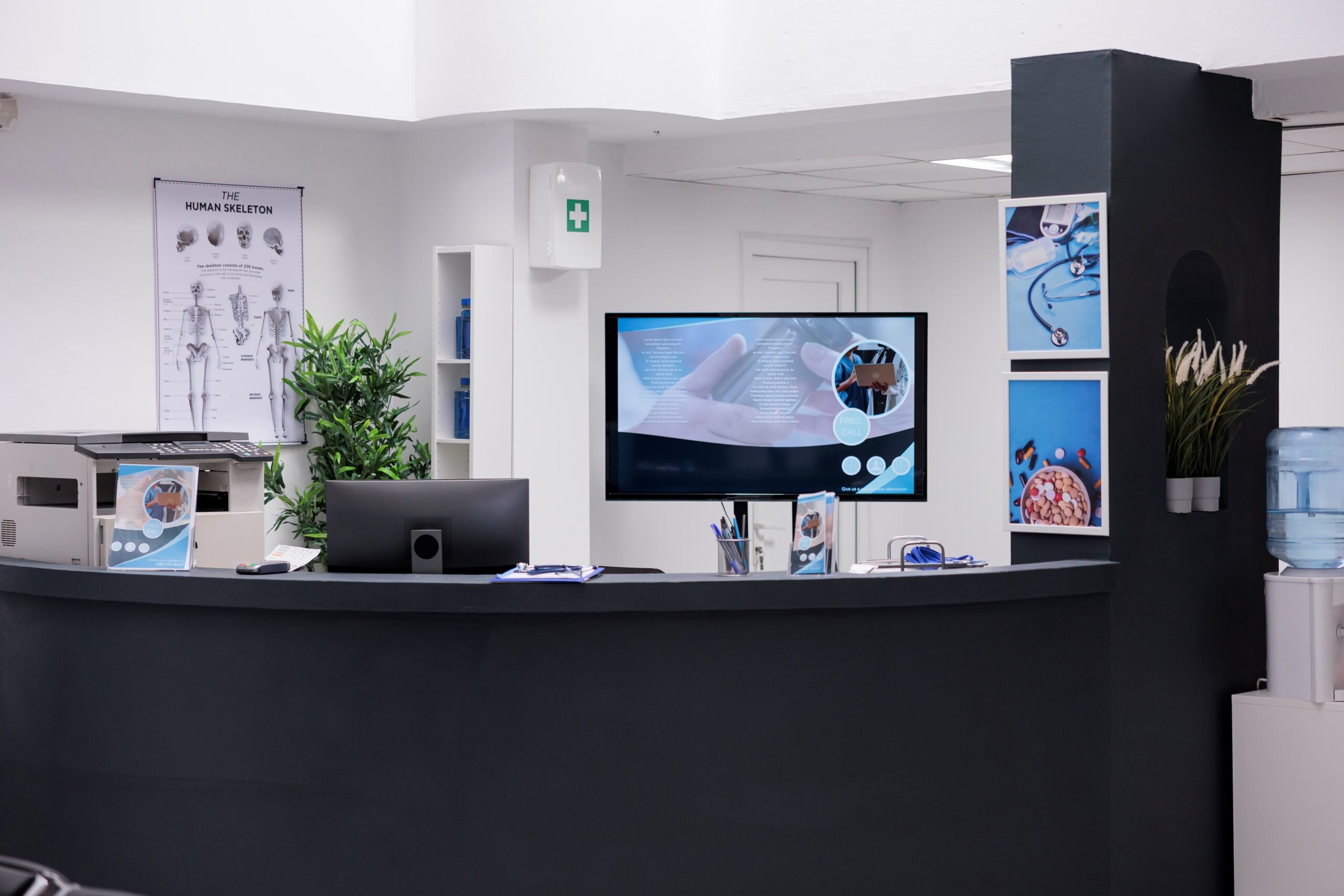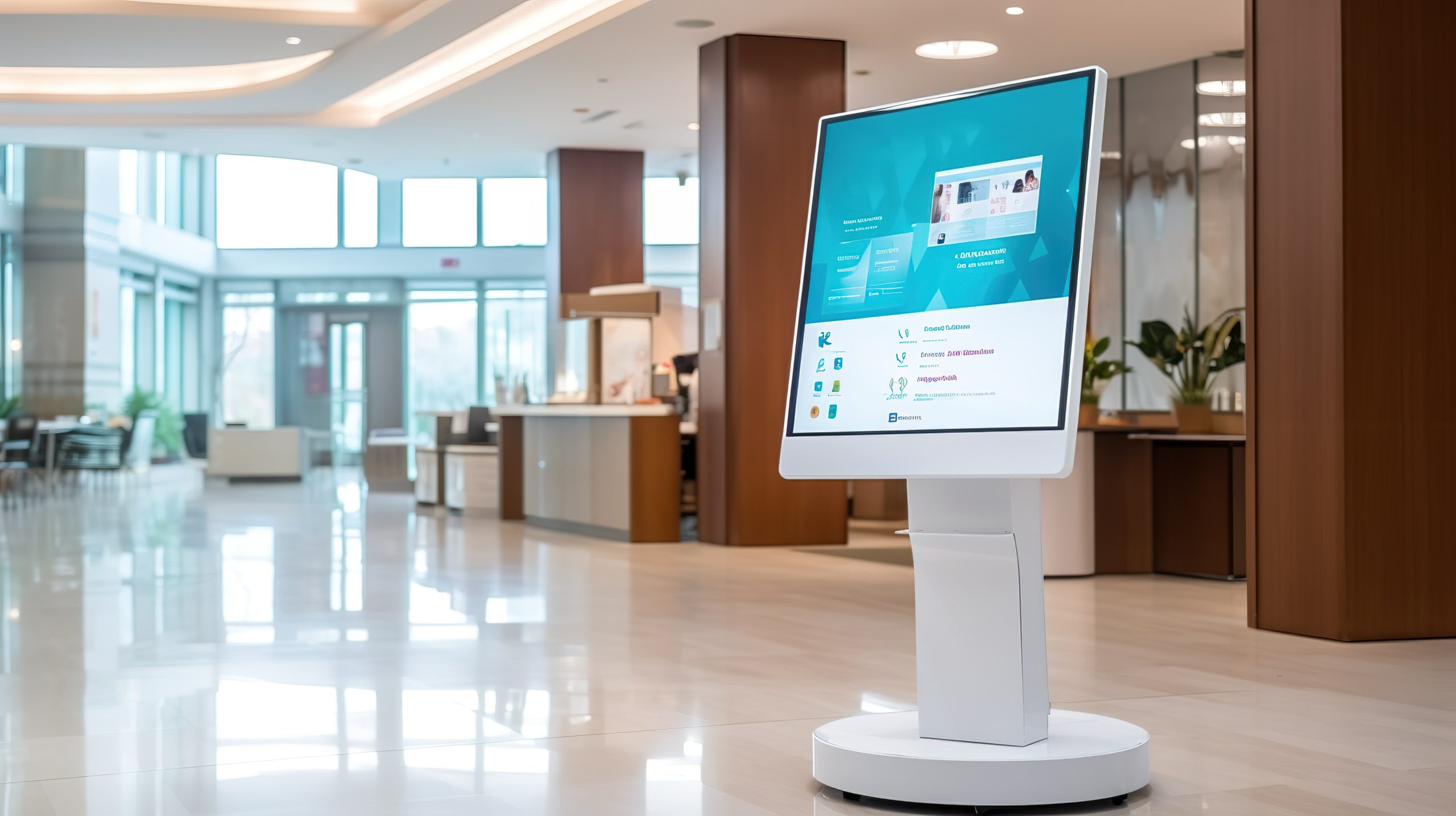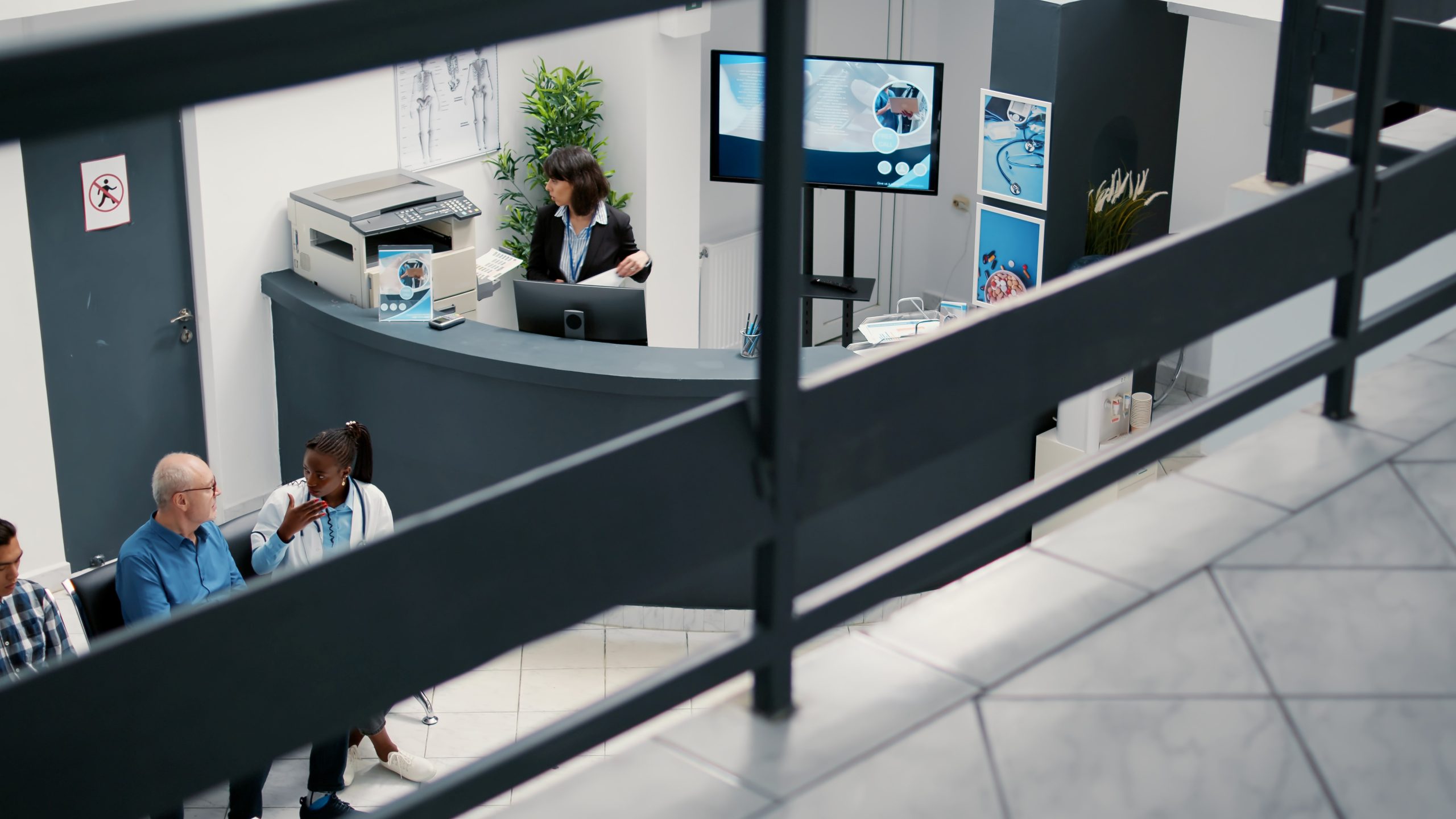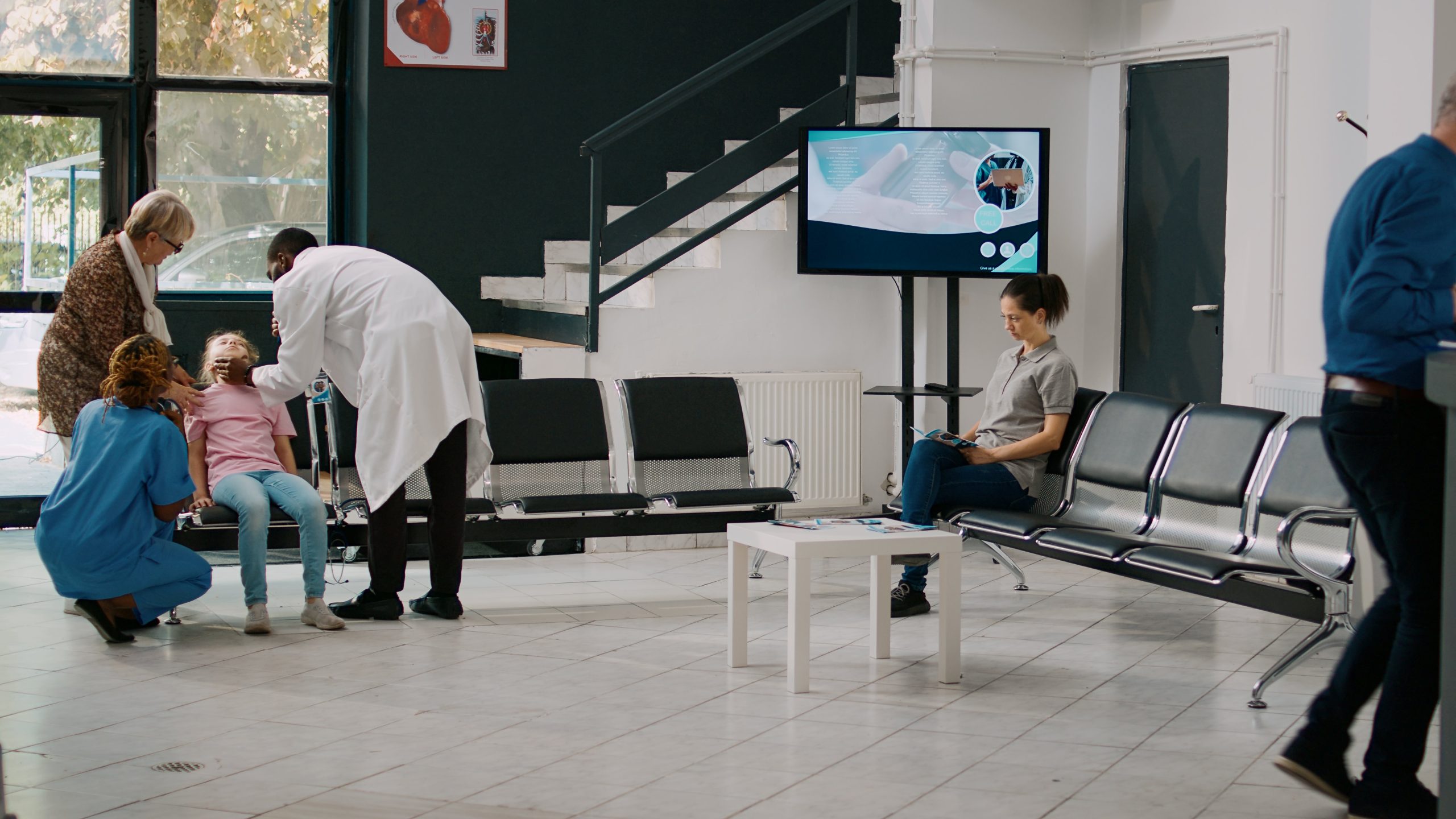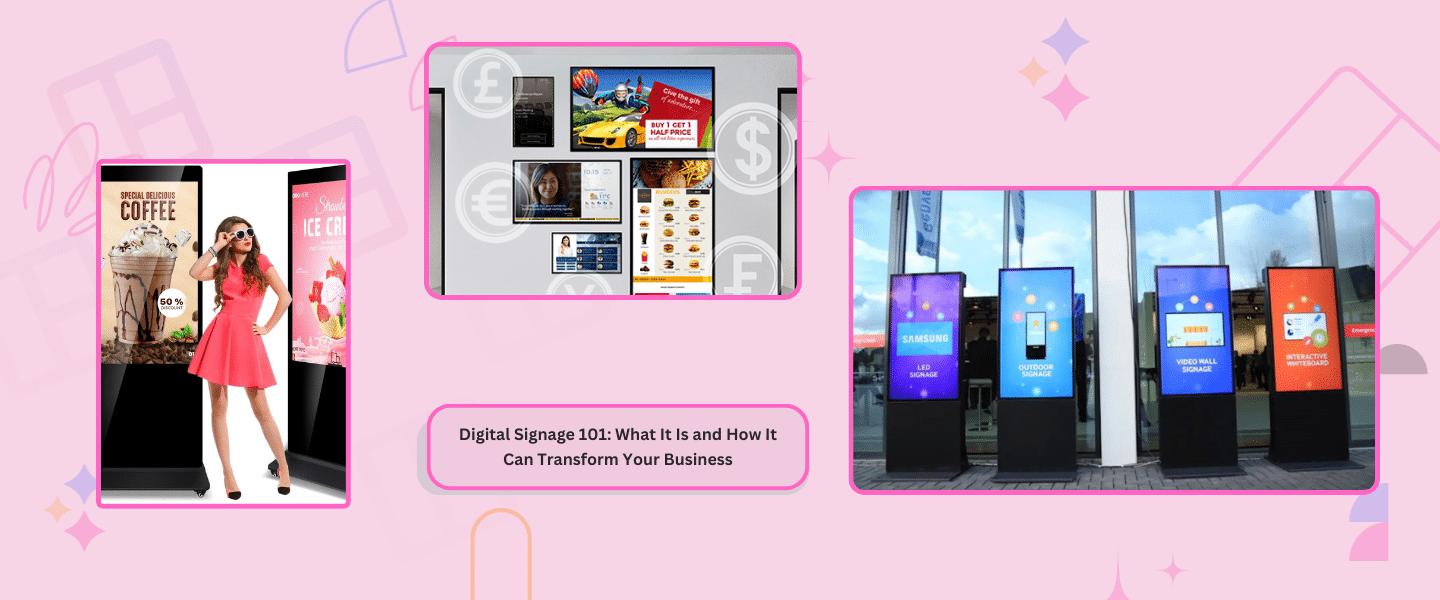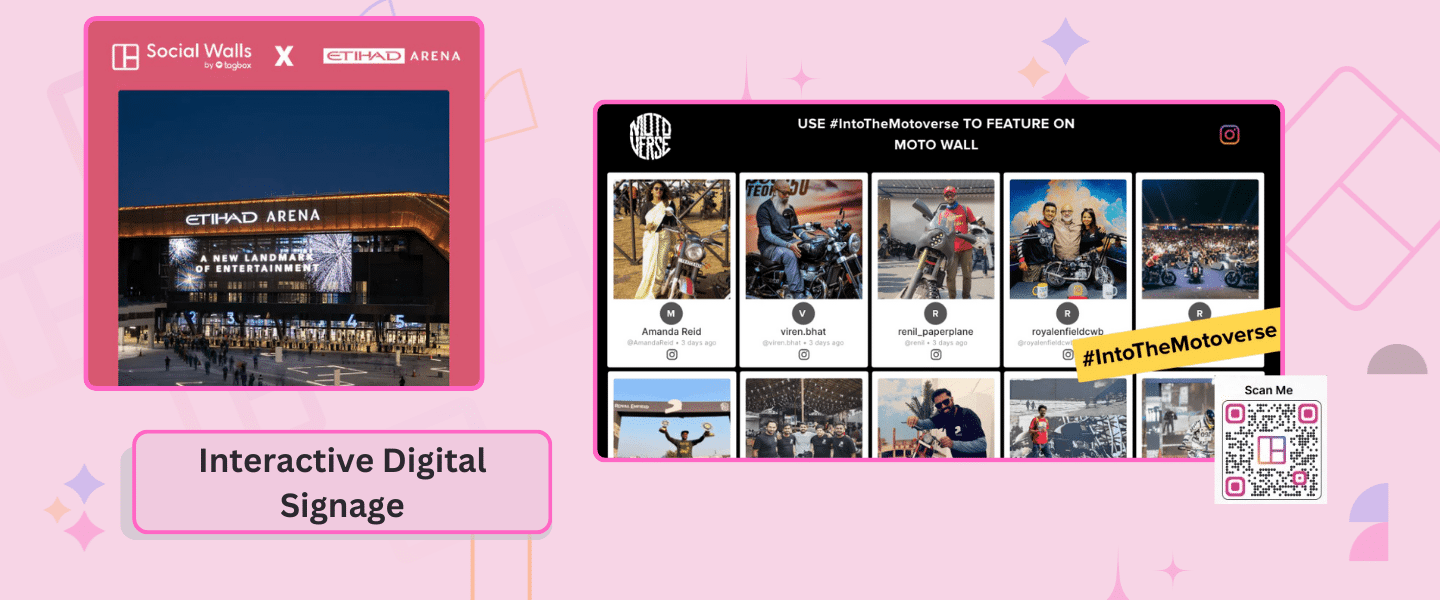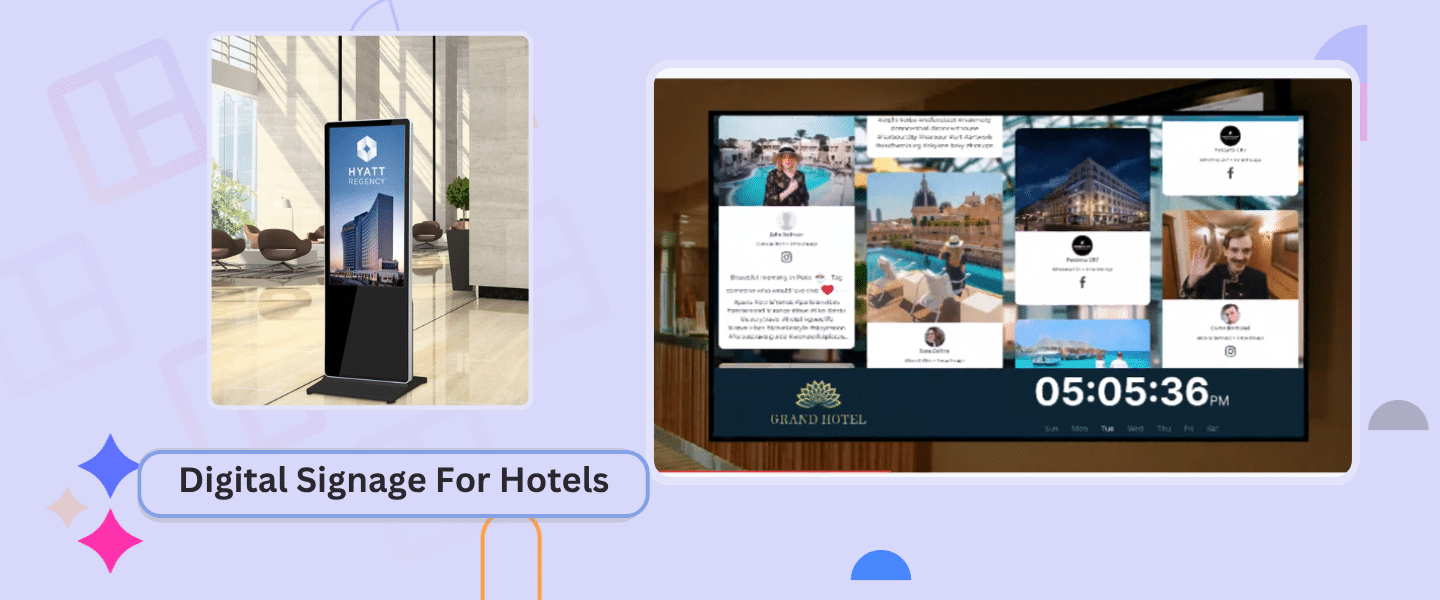Hospital Digital Signage: Enhancing Patient Experience
Author: Wagisha Adishree
8 minute read
A hospital is a high-pressure environment where even a slight delay can be life-threatening. From navigating through a complex building to receiving accurate, timely information, patients and visitors often face confusion and stress.
Therefore, the demand for a better patient experience calls for investment in hospital digital signage. If, as a health service provider, you want to learn more about digital signage, this is the right place for you. In this blog, we will unveil all the queries related to hospital digital signage.
So let us get into it.
What is Hospital Digital Signage?
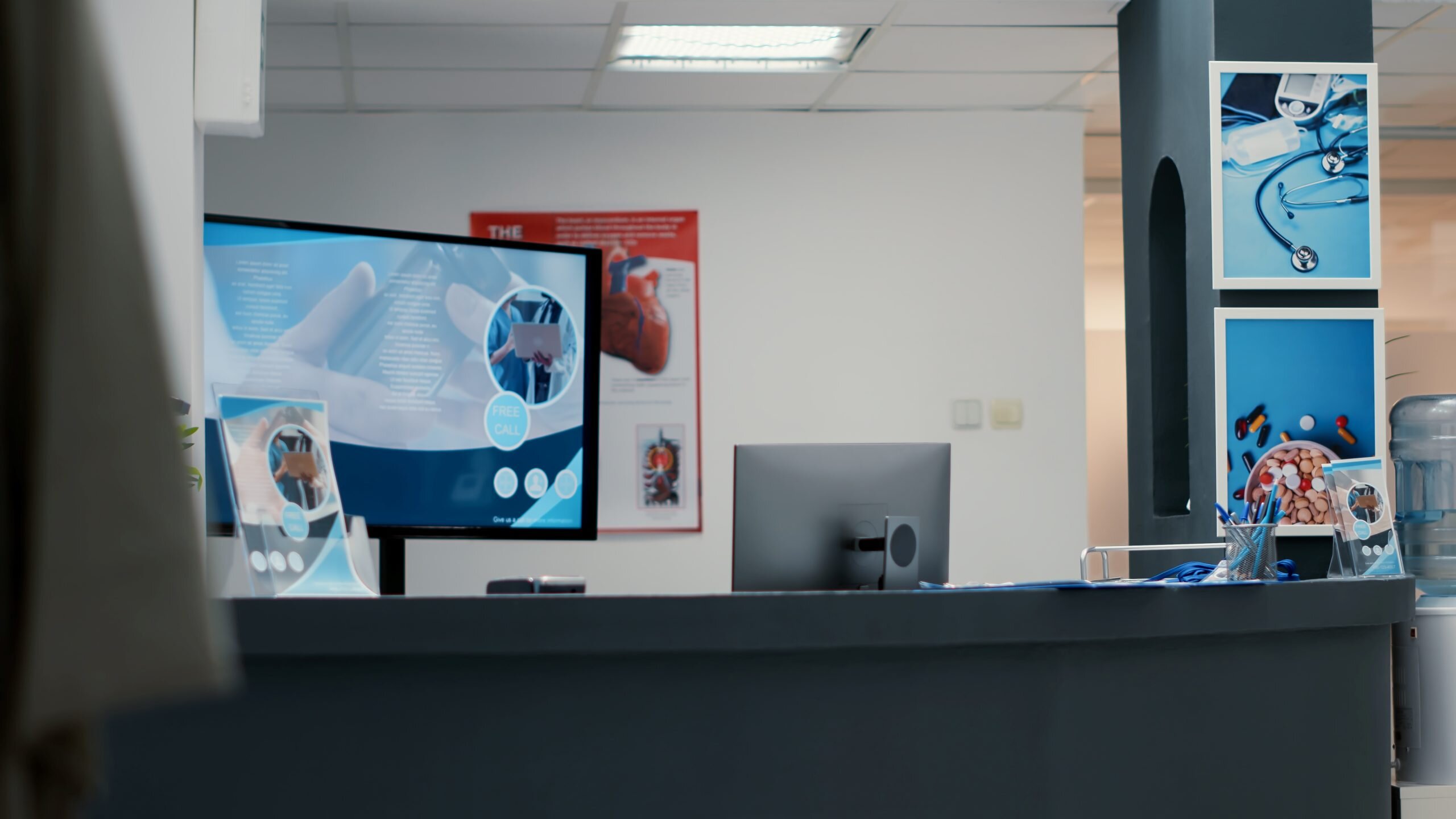
Hospital digital signage refers to the use of digital signage in hospitals and healthcare campuses. It replaces the traditional static board and images, offering an eye-catching way to keep the patients and their visitors informed.
Whether you place them in hospital lobbies, waiting areas, or staff lounges, digital signage for hospitals is a powerful communication tool.
With tools like Social Walls, you can amp up the effects of your digital signage in hospitals.
For patients and visitors, showcasing relevant and verified social media posts like patients’ success stories, health awareness campaigns, community outreach programs, or doctor introductions adds a personal and relatable dimension to hospital communication. This helps reduce anxiety, create transparency, and create a connection with the healthcare facility.
Beyond social media, hospitals can also use Social Walls to display:
- Health tips and wellness advice
- Live hospital updates or emergency notices
- Doctor availability and consultation schedules
- Wayfinding Information
Centralized Updates
Broadcast critical messages, emergency alerts, or hospital events instantly—
across all screens, from one dashboard.

Types of Digital Signage Used in Hospitals
Here are some types of digital signage in hospitals for use that you must be aware of. We have also added how you can elevate the ultimate experience with Social Walls.
1. Information Displays
These hospital digital signs are generally placed in corridors, lobbies, and waiting rooms. This helps the health service providers in giving information in real time to the patients and their visitors. This information includes :
- Department directions and room numbers.
- Estimated wait times and turns for the patients.
This helps in reducing patient anxiety and improving navigational efficiency.
Pro Tip: With the real-time and custom post feature by Social Walls, healthcare IT admins can upload any post and showcase it in real time.
2. Patient Education Screens
Hospital digital signage is usually placed in waiting rooms and patient lounges and can help educate patients about diseases. This educational content can be related to chronic disease management, post-treatment care tips, and preventive measures.
When hospitals provide health literacy, it helps patients to get actionable knowledge.
Pro Tip: 82% of patients are likely to follow health advice given by healthcare content. As a healthcare service provider, you can aggregate this content from various platforms and showcase it on your hospital’s digital signage.
3. Emergency Alerts and Announcements
Hospital digital signage can also be connected with alert systems and can be used for
- Code blue or emergency evacuation
- Safety drills and lockdown announcements
- Real-time crisis announcements
They ensure safety by delivering urgent messages instantly across all zones.
Pro Tip: With Social Walls, you can add a ticker to your hospital digital signage to continuously update your visitors in a scrolling or static format.
4. Staff Communication Boards
Digital Signage can be located only in the staff area. These digital signs in hospitals also help the healthcare service providers to facilitate communications like
- Shift schedules
- Policy updates
- Training materials
Pro Tip: Social Walls’ Studio feature allows you to share important updates on your displays by transforming them into a dashboard.
5. Digital Directories and Wayfinding Kiosks
Interactive touchscreens or static digital maps placed at entrances and major junctions help:
- Finding the department easily accessible
- Patients check in and confirm appointment
- Multilingual navigation for diverse patient populations
You Can Also Read: How To Use Retail Digital Signage to Get More Sales
How Hospital Digital Signage Works
Implementing digital signage in hospitals involves more than just mounting screens on your hospital walls. Behind the scenes, a digital ecosystem powers real-time communication and integration with hospital systems.
1. Content Creation And Management
Content creation is one of the crucial steps when it comes to managing digital signage in a hospital. It serves as the control hub
Hospital administrators and their IT teams can:
- Design content templates for different departments
- Schedule content by time, location, or audience
- Update information remotely across multiple screens. This centralized approach ensures consistency, accuracy, and ease of use
2. Real-time Updates for Schedules, Alerts, and Health Information
Hospital digital signage can pull content from integrated sources to display :
- Appointment queues and wait lines
- Emergency code and alerts
- Health news or vaccination drives
These real-time updates reduce confusion and help patients feel informed and safe.
3. Integration with Hospital Systems
To enhance automation and reduce manual tasks, the digital signage in hospitals can be integrated with :
- Electronic Health Records that help users pull anonymized patient information or alerts.
- Appointment scheduling systems to display a live queue and availability.
- Interactive features such as touchscreens, QR codes, and multilingual support.
Must Checkout: How to Use Digital Signage In Restaurant To Get More Sales
Benefits of Hospital Digital Signage
Adopting digital signage in a hospital goes beyond modernization; it directly improves the patient journey, streamlines internal operations, and boosts institutional safety and compliance. Here’s how:
1. Enhanced Patient Experience
Digital signage in hospitals and maps helps patients and visitors navigate the facility easily, which helps in reducing confusion and late arrivals. Healthcare service providers can also install displays in waiting areas or wards, share wellness tips, disease prevention information, and recovery guidelines. This helps to improve health literacy.
2. Operational Efficiency
Healthcare digital signage also plays an important role in streamlining internal communication. It helps the hospitals to display real-time messages for staff and patients. This eliminates the need for traditional bulletin boards. In critical situations, an emergency alert can be shown across all screens. This will save time and ensure a swift response.
3. Data and Analytics
Modern digital signage software for hospitals offers more than just content display; it delivers valuable, actionable insights that help improve hospital operations. Monitoring the patient flow, the hospital can track screen engagement, queue times, and foot traffic. This will help them to optimize facility layout and staffing levels. These analytics also support service delivery improvements by highlighting which content resonates most with the patients and their visitors.
Checkout: Interactive Digital Signage with Social Walls
Best Practices For Using Hospital Digital Signage
Take a look at the best practices for using hospital digital signage.
1. Strategic Placement of Screens for Maximum Visibility
For maximum visibility and information sharing, digital signage in hospitals should be placed in a high-traffic area. For example, hospital digital signage in lobby, elevator area, and reception can make sure the content is consumed by patients, visitors, and staff. This ultimately helps in communications and wayfinding.
2. Skimmable Content
Content design for hospitals and healthcare should be done carefully. Use high-contrast visuals, legible fonts, and simple language to ensure all users can quickly absorb the message. Avoid information overload, keep messages short and visually balanced. A clean, consistent design across screens reinforces trust and professionalism while reducing cognitive load for patients.
3. Ensuring Multilingual and Accessible Content
Hospitals serve a diverse population. Therefore, your content must be offered in multiple languages. Offer content in the commonly spoken language of the region. Besides, you can always use subtitles, icons, and audio assistance when possible.
4. Regular Content Updates Aligned With Hospital Schedules
Outdated content diminishes trust and leads to misinformation. Make sure digital signage content is updated frequently to reflect real-time schedules, emergency alerts, appointment changes, and upcoming hospital events or health campaigns. Try to automate updates when possible using tools like Social Walls to maintain accuracy and relevancy across all hospital displays.
Read More: Innovative Ways To Use Digital Signage For Schools with Social Walls
Future Trends in Hospital Digital Signage
Some of the future trends in Hospital digital signage are given below.
1. AI-driven Personalized Content
AI-driven personalized content will be tailored based on time or day, location, and patient demographics. This helps hospitals deliver more relevant information in real time, whether it’s health tips in waiting areas or targeted wellness campaigns.
2. Integration With Patient Portals and Mobile Apps
Integration with patient portals and mobile apps will create a smoother communication ecosystem. Patients will be able to scan the QR code from the signage and access their appointment schedules, medical information, and educational content. This helps to bridge the gap between onsite and digital engagement.
3. Use of Augmented Reality for Wayfinding
Augmented reality for wayfinding is an emerging innovation that transforms navigation. You can also combine AR-enabled signage with mobile apps and offer real-time, interactive directions. This will help the patients and visitors find departments or rooms more intuitively, especially in large or multi-building campuses.
Deliver timely updates, ease navigation, and reduce wait-time stress with smart, interactive digital displays across your hospital.

Conclusion
Nowadays, hospital digital signage is not just a modern add-on, but the need of the hour. While it tries to calm the chaos of the hospitals and healthcare service providers, it also streamlines the workflow. With tools like Social Walls, these healthcare service providers can enhance the patient and visitor experience.
If you are a healthcare administrator or IT leader in healthcare service, now is the time to invest in a scanable, centralized digital signage solution. Explore Social Walls and discover how you can bring clarity, connection, and innovation to every corner of your hospital.

